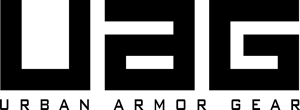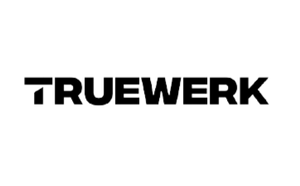Welcome to the new frontier of eCommerce, the Google Smart Shopping campaigns. You thought online shopping was easy already? A quick search query in Google and a few clicks later you’re on a website having a staring contest with a pair of shoes you absolutely must have, or the computer accessory you didn’t know existed, but now can’t live without. The internet already makes shopping a breeze, but Google said, “Hold my beer!” and took that concept and made it even more efficient! With the help of Google Shopping, you can now just browse products from millions of different brands without ever leaving the Google website. All of the styles, and all of the options, right there, next to each other, waiting to be delivered to your door.
But here’s the best part, not only does it simplify the whole experience for the end user, but also the brand. Making it easier than ever to connect amazing brands and customers!
Smart Shopping campaigns use an incredibly efficient Google algorithm that puts your brand directly in front of shoppers who are looking for what you’re offering. We generally see many more impressions than standard search campaigns, and a much cheaper cost per click. This pushes both brand awareness and revenue at the same time. Smart Shopping campaigns have a tremendous ability to generate additional revenue even at higher spends. The set-up-to-launch is quick, the results are decisive, and most importantly, it’s easy to track. Plus, they’re accessible directly within your Shopify account, which is a real game-changer.
Another great bonus of Smart Shopping campaigns is that much of the optimization is automated - the machine learning system can do most of the heavy lifting. This saves you a lot of time, but it doesn’t mean you can sit back and do nothing. You’ll see great improvements if you follow a few simple guidelines.
While there are countless tutorials on how to set up your Smart Shopping campaign, in this article, we will review what to do with it once it’s up and running!
ASSESSING YOUR SMART SHOPPING CAMPAIGN PERFORMANCE
So, you’ve set up your Smart Shopping campaigns and you’re eager to see how they’re performing. But you need to be patient. These campaigns are powered by machine learning, so they require a 14-day “learning period” to accrue data and adjust the algorithm to your account. The system needs to learn about your products and your target market, so it can serve the right shoppers at the right time. Once your campaign has run for the full two-week period, you can begin assessing your performance.
Understanding key metrics
There’s no shortage of data points to show you how you’re performing, but it’s important that you look at them in relation to one another. You can find the data for these in the Shopify interface, in the marketing tab in the automations section.
Here’s the framework our team uses to analyze an account:
Step 1: Impressions
First up, impressions. An impression is counted each time your ad is shown on a search result page or another site on the Google Network. This gives you a straightforward sense of volume - but not engagement.
Step 2: Click-through rate
To understand how many of those impressions resulted in clicks, you’ll need to dig into your click-through rate. That’s the number of clicks that your ad receives divided by the number of times your ad is shown.
For example, if you had 5 clicks and 100 impressions, your click-through rate would be 5%. The higher the rate, the better.
With Smart Shopping, we tend to see lower-than-average click-through rates, as the volume is much higher than most campaigns that we run. Luckily, since Shopping ads are usually favored by high-intent shoppers, we typically see strong on-site conversion.
As a general rule, we try to keep the click-through rate at 1%, and impressions as high as they can go. If your click-through rates are lower than 1%, you’ll need to consider making adjustments to your Shopping feed, like updating your product titles. We’ll cover this in more detail in module three.
Step 3: Conversion count
In the Shopify interface, you can see how many customers clicked through your ad and completed a purchase. This is your conversion count. Simply put, the more sales you’re getting through your campaign, the better. For some business types with longer sales cycles, conversions may be delayed. If your customers typically require a long consideration cycle, be sure to factor this conversion delay into your analysis.
For deeper insights into what prospective customers are doing when they get to your site, check out the data included in the “marketing funnel” section of the Shopify interface. By understanding what percentage of visitors added products to the cart and what percentage of these people converted, you can pinpoint whether prospective customers are getting “stuck” at a certain point along the funnel, preventing them from converting.
Step 4: Return on ad spend
Finally, calculate your return on ad spend by dividing your total sales by total ad spend. If your return on ad spend is 1, it means that the money you put into the campaign is equal to the value of the sales you made from it. If your return on ad spend is higher than break-even, you are receiving positive results from your ad campaign. Add the cost of goods sold and other fixed fees for an even more accurate calculation.
Taking action
Once you have a solid understanding of how your campaign is performing, you can make an informed decision on your next steps. If you’re seeing positive return on ad spend, try to fuel even more growth by increasing your budget. If your performance isn’t where you want it to be, take steps to optimize your campaigns, which we will cover in the following modules.
OPTIMIZING YOUR SMART SHOPPING CAMPAIGNS
Google’s Smart Shopping campaigns use machine learning automation, so they require very little maintenance. That doesn’t mean you should do nothing. Our team has identified several ways to boost performance with manual tweaks, which we’ll walk through today.
Remember that you should not make changes to your campaign until it’s been live for at least 14 days, to allow the algorithm to calibrate.
Budgeting
One of the biggest pitfalls we see in Shopping campaigns is overly restrictive budget settings. It’s only natural that merchants want to err on the side of caution when starting with a new marketing channel. But if your budget limits are too restrictive, you may prevent yourself from seeing any performance at all. So how do we go about determining the right “starter budget” for our campaigns?
We like to think about budget in relation to our return on ad spend.
Here’s an example: Samantha sells beaded bracelets worth $25 per purchase. Assuming Google is able to get her a purchase for $20 of ad spend, she will make 125% return. In this case, because her return on ad spend is positive, we recommend that she tries to get at least 30 purchases per month, which works out to a $600 monthly budget, and $750 in revenue.
Generally, your budget should depend on your product categories -- higher ticket items tend to have higher cost-per-conversions. For example, a high-end jewellery brand would normally require a much higher budget. The audience is out there, but it takes longer to find them and the net has to be wider. The cost-per-conversion will be high, but the overall return on ad spend remains stable, which is the real goal.
Another key factor is your product margin, or the cost of goods sold.
For example, a bicycle might sell for $150, but it has a 50% cost of goods sold. This gives you $75 per product to work with. Pushing overall cost-per-conversion up to the $75 level early on will allow the algorithm to generate more sales quickly.
From there, you can start to work that cost-per-conversion down. Consider it a downpayment to speed up the algorithm, and later you can sit back and profit off the investment you made at the start. The most important part is that front-end data.
Improving the post-click experience
There’s nothing more frustrating than seeing prospective customers click through to your site, only to leave it without making a purchase. Fortunately, the most valuable part of your Shopping campaign data is the ability to identify opportunities to strengthen your on-site experience.
To see all post-click data, check out the marketing funnel section of the Shopify interface, in the automations section of the Marketing tab. Here you will see metrics for “session”, “added to cart” and “orders”. These numbers help you understand how far people are making it into the purchase funnel before giving up.
For example: If a high number of prospective customers view your product pages, but do not continue with an order, it could be an indication that your pages could be more compelling or trustworthy.
Consider adding unique selling points, like fast shipping, 24/7 customer support or free refunds. Or perhaps try including some customer reviews, press mentions and other endorsements. You could also try boosting your webpage quality, by reducing load times and adding product images and descriptions that cater to your target audience. Make sure your page doesn’t include any counterfeit trademarks, poorly written copy or unclear messaging about customer support or return policies. These can all prevent your prospective customers from moving forward with their purchase.
On the other hand, if you’re seeing a high number of prospects abandoning their order after adding products to their shopping cart, you can try other approaches. Perhaps set up emails or similar triggers to encourage users to take action. These could simply be reminders that they have not yet finished the checkout process, or they could be additional offers to sweeten the deal, like free shipping or short-term discounts.
Feed optimization
Your product feed can affect when, and to whom, your ads show on Google properties, and can greatly influence the number of impressions and clicks you receive. We’ll explain more about feeds and how to optimize them in the next module.
Taking action
When it comes to optimizing your campaign performance, keep in mind that some of the most powerful changes you can make live outside of your campaign settings. Be sure that you’re taking steps to improve customers’ on-site experience and don’t forget to dig into the data the campaign provides you.
FEED OPTIMIZATION
The feed is one of the most important components of advertising your free and paid listings on Google. So what exactly is it? A feed is the product data you provide that Google’s Merchant Center uses to display your products on Google. Your feed setup will impact when your ads show on Google and to whom. It will also impact how your ads are displayed.
Make sure that all products available on your website are in your feed, except for the ones that you do not plan to sell. It’s also critical that you’ve populated all pertinent attributes in your feed. The more information Google has about your products, the easier it will be to match your ads to relevant searchers.
Shopify’s Google Shopping app automatically creates and regularly updates your feed, streamlining the management process. We’ve found that you can enhance your performance even more by making manual adjustments to your feed.
Building a robust feed
First things first, let’s talk “feed attributes”. Feed attributes are the product data that you share with Google via your feed. There are multiple categories of attributes, including the basics like title, description and price. Each attribute included in your feed should be written in the way you’d like it to be viewed by your prospective customers.
We like to think of attributes in two buckets: those that are required, and those that are optional. Required attributes are those that must be in place in order for your feed to be approved and your ads to run. The specific list of required attributes differs by country, but typically all “core” attributes are required, including product ID, title, description, link, image_link, condition, price and availability.
It goes without saying that you need to make sure these are included on your feed. If you’re using the Shopify app, they automate this process for you. But simply adding them is only half the battle. The real opportunity comes from optimizing the data you’re adding to your feed.
Making your attributes even more compelling
You can optimize all of your feed attributes, but we really like to focus on the title and product type, which will have the biggest impact on your performance.
An Example… Let’s start with titles. You can write a product title a gazillion different ways - let’s say you’re selling a bike. You could advertise it as a Blue Bicycle, a Brand-New Sports Bike or a Top of the Line Cycl-o-tron. The key is to write something that resonates with your audience.
It’s very important to focus on your word choice. Here’s how we build compelling messaging for our titles:
- First, make a list of the search phrases someone might use when looking for the product.
- Next, round out your list with a little competitive sleuthing. How are your competitors describing their products?
- Finally, head to Google Trends, a free tool that allows you to see search volume by phrase. Plug your list of potential titles into the tool to get a sense for which is most popular in your target market. You can optimize every element of your title and even your product description using this method.
Now that you know how to build a great title, let’s look at the product type attribute. You can address these in the Shopify interface, specifically within the Google Shopping app. Go to “approved products” then “edit Google Shopping fields.”

Google uses your product type to understand what you’re selling and match your ads to relevant searches. When we build product types, we like to use a nested structure of increasing specificity, featuring subcategories within categories. For example, let’s take a dog blanket. If we start with Home and Decor, we can branch down into Furnishings, Bedroom, Blanket and finally Dog, fleshing out your product type at every level of relevance.



Taking action
That’s all there is to it! Between optimizing your titles and organizing your product type attributes, you’ll ensure that you’re setting your feed up for success.
You’re here! On the frontier of eCommerce, learning as you go on this brand new horizon of digital shopping. There is of course so much more nuance to learn and experience as far as Google Shopping campaigns and how they play with the rest of your digital strategy, but that’s for another article. If you would like to get started on Google Shopping and would like a team of experts to help you get on your feet and reap the benefits, feel free to click on the following link [https://www.slicedbread.agency/] to learn more about Slicedbread and how we can help you manage your online advertising.
Now get out there and sell smart!


















